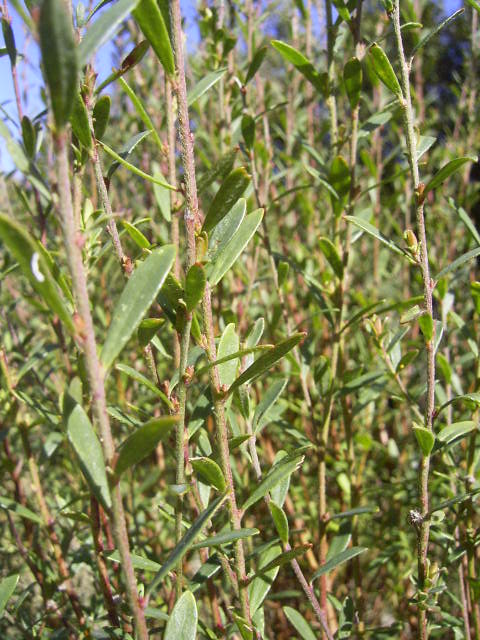Scientific Name: Pimelea curviflora
Common Name: curved riceflower
Family Classification (Clade): Eudicots
Family: Thymelaeaceae
Threatened Species Status: Rare
Permit: It is an offence to collect, disturb, damage or destroy this species unless under permit.
Form Description: Dwarf shrub with pale to dull green densely hairy leaves with incurved margins.
Height (m): 0.15 – 1.5
Flowers: Many flowered compact heads of greenish-yellow flowers at end of side branches.
Fruit: Dry, nut-like
Municipality
Plant Communities
Habitat Notes
Recorded often in forest and often in sandy soil.
Site Tolerance
Dry, Shady
Soil Tolerance
Loam, Nutrient-poor, Sandy, Well-drained
General Notes
Resistant to Phytophthora cinnamomi.
Propagation Calendar
-
Flowering Month
Jan Feb Mar Apr May Jun Jul Aug Sep Oct Nov Dec -
Seed Collecting Month
Jan Feb Mar Apr May Jun Jul Aug Sep Oct Nov Dec -
Sowing Month
Jan Feb Mar Apr May Jun Jul Aug Sep Oct Nov Dec -
Cutting Month
Jan Feb Mar Apr May Jun Jul Aug Sep Oct Nov Dec
Propagation Method
Seed Information
Seed Collection
Very difficult from seed. Seed releases very quickly once ripe. Slightly immature fruit can be harvested and allowed to mature in a warm position. Rub on wire screens to remove outer coverings.
Seed Treatment Method
Cold Some species require exposure to cold before they germinate. These species are best sown in early winter and left to germinate in a shade house.
Seed Treatment Notes
May respond to a combination of heat and smoke treatment or stratification may be useful. Secure seeds in a plastic bag with a mixture of wet sand and peat and hold in fridge at 2°C for at least six weeks. If germination does not occur within 30 days seed can be stratified for another 3 weeks.
Cutting & Division Information
Can be grown from cuttings of very young growth. Care should be taken not to strip back the young bark.
